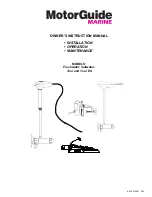
M I K R O E L E K T R O N I K A S O F T W A R E A N D H A R D W A R E S O L U T I O N S F O R T H E E M B E D D E D W O R L D
2
23
3
page
dsPICPRO
USB
3
dsPICPRO3 User
’
s Manual
MikroElektronika
Development tools
AA
--
DD
CC
OO
NN
VV
EE
RR
TT
EE
RR
II
NN
PP
UU
TT
A-D CONVERTER INPUT
Figure 26.
A-D Converter input
dsPICPRO3 development board has two potentiometers for working with Analog to Digital
Converter (ADC). Both potentiometers outputs are in the range of 0V to 5V. Two analog sig-
nals can be connected on two different analog input pins at the same time.Jumper group J17
enables connection between potentiometer P3 and one of the following pins: RB8, RB9,
RB10 or RB11. Jumper group J18 enables connection between potentiometer P4 and one of
the following pins: RB12, RB13, RB 14 or RB15.
In order to measure an analog signal without interference, make sure that jumper J3 is
removed, as shown in Fig. 27. This will disable connection between used PORTB pin and
pull-up/down resistors.
Applications of A-D Conversion are various. Microcontroller takes an analog signal from its
input pin and translates it into a digital value. Basically, you can measure any analog signal
that fits into the range acceptable by dsPIC. This range amounts from 0V to 5V.
ADC INPUT
ENABLED
ADC INPUT
ENABLED
VREF
4.096V
ON-BOARD
VREF
4.096V
ON-BOARD
















































